Behavioral activation is a 3rd generation behavior therapy for treating depression. We have built two different smartphone-based technologies supporting behavioral activation; MORIBUS and MUBS. MORIBUS is an app for patients to plan and track healthy activities designed to be part of BA therapy with a trained therapist, while MUBS utilizes machine learning techniques for recommending healthy activities to patients and is designed to be used stand-alone outside therapy.
As part of the RADMIS project, we have been investigating how smartphone technology can be used to provide support for cognitive behavioral therapy (CBT) in mental health. More specifically, we have been investigating the behavioral side of CBT, trying to help patients plan and do more activities, which might help depressive patients handle and improve their symptoms. For this purpose, we have been building technologies that support the Behavioral Activation (BA) approach.
Intervention-focused research has most commonly employed Cognitive Behavioral Therapy (CBT) as the choice of treatment methodology [1]. However, the behavioral activation component of CBT has repeatedly been found to have the same positive effect as full CBT for the treatment of depressive symptoms. Compared to CBT, BA is simpler to administer and use and has shown a significant effect on the reduction of depressive symptoms. The main approach in BA is to reduce depressive symptoms by engaging in – or ‘activating’ – pleasant activities.
BA is particularly suited for smartphone technology. Partly because behavior such as physical and social activity can be tracked using smartphones, and partly because the phone can be used as a platform for providing just-in-time and context-aware interventions to the patients. Despite this, only very few technologies supporting BA have been researched.
In this blog post, we present two types of technologies we have designed for BA named MORIBUS [2, 3] and MUBS [4], respectively:
- MORIBUS – is a smartphone-based system designed to support activity planning and tracking for patients with depression as part of a blended treatment setup. MORIBUS is designed to help the patient and the therapist to maintain a diary of daily activities and rate their mood, accomplishment perception, and pleasure during these activities as well as provide personal insights and sense-making through a visual tool. As such, MORIBUS aims to enable less-trained clinical personnel, including nurses and psychology trainees, to assist in BA therapy.
- MUBS – is a smartphone-based recommender system for the treatment of depressive symptoms. Adhering to the principles of BA therapy, MUBS aims to reinstate (i.e., recommend) pleasant activities back into the lives of patients with depressive symptoms. MUBS utilizes a content-based probabilistic technique with a catalog of 384 pleasant activities in order to recommend activities personalized to the individual user. MUBS is designed as a stand-alone tool to be used both as part of BA therapy as well as outside therapy.
MORIBUS
MORIBUS was designed by an interdisciplinary team of psychiatrists, clinical psychologists, computer scientists, biomedical engineers, mobile app designers, and developers, as well as two patients diagnosed with depression. The design was based on the paper-based BA therapy method, which is currently used at the Psychiatric Center Copenhagen. MORIBUS was designed to be part of the clinical treatment of depressed patients and to replace paper-based schemas. As such, the overall design goals of the app were to:
- be able to plan and register activities, and their corresponding mastery and pleasure on an hourly basis;
- collect data on planned and executed activities together with context information such as time, location, and mood;
- provide visual analytic tools that give the patient and the therapist insights into the relationship between mood, activities, pleasure, and mastery.
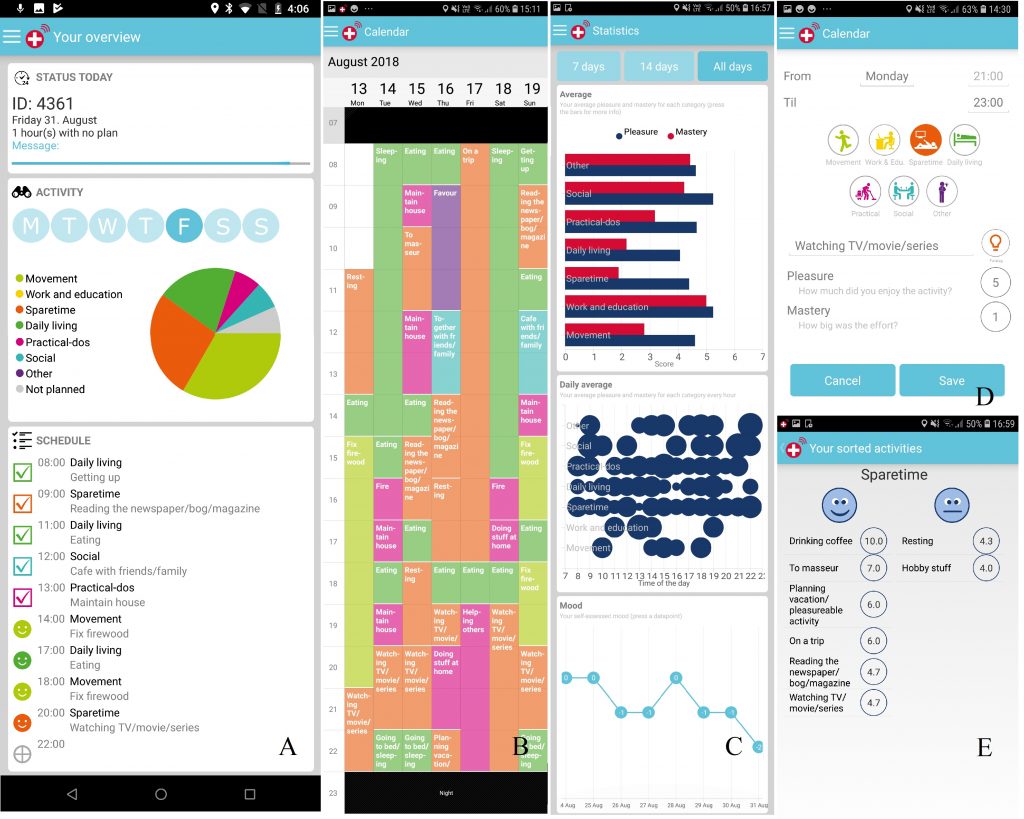
Figure 1 shows the final design of MORIBUS, which supports the following main BA elements:
- Activity planning and registration – The main page (Figure 1A) shows the daily plan of activities, including a visualization of the activities into seven categories. The planning of activities was designed similarly to the paper-based BA schema using a calendar week view (Figure 1B). Details on an activity’s timing, category, and textual description are provided on the activity details page (Figure 1D). A specific activity can be entered textually or selected from a list of positive activities. Timely registration is supported via notifications; when an activity is planned to end, the user is notified to enter mastery and pleasure scores. If no activity is planned, the notification will ask the user to enter what s/he has been doing for the last hour via the activity details page (Figure 1D).
- Mood and well-being tracking – Daily mood tracking is done using a 5-point scale from ‘Extremely bad’ (-3) to ‘Good’ (1). Biweekly assessment of depression and well-being is done by PHQ-9 and WHO-5, respectively.
- Statistics and insights – A core design goal of MORIBUS is to support personalized insight from the self-reported data, in particular, the relationship between activities and mastery, pleasure, and mood ratings. The pie chart in Figure 1A shows the distribution of across different types of activities, and the data charts in Figure 1C visualize relationships between e.g. mastery, pleasure, mood, and different types of activities.
Feasibility Study
MORIBUS was subject to a clinical feasibility study [5] with a small number (N=7) of patients diagnosed with an affective (unipolar or bipolar) disorder [3]. This study investigated the usability and usefulness of MORIBUS and looked into the details of how users used it for behavioral activation over a 4-week period. Despite the low number of participants, MORIBUS was used quite intensively by each patient. In total, 1,684 activities across 140 days were collected. Overall study compliance was 71% as calculated by the number of days that activities were registered or rated within the entire study duration.
Patients reported that they found MORIBUS useful for BA and stated that they prefer MORIBUS over the existing paper-based schemes. As one of the participants noted:
“I don’t want to bring pen and paper with me to register activities… and in front of people. But on the phone it is much more anonymous – people can’t see what you use the phone for.”
When looking at the usability scores, MORIBUS scores slightly over neutral. However, one should remember that MORIBUS is designed for a rather cumbersome data entry task – detailed activity registration on an hourly basis, which puts a high workload on the user. In the interviews, patients reported that they found MORIBUS useful for BA, especially the insight gained from the chart visualizations (Figure 1C).
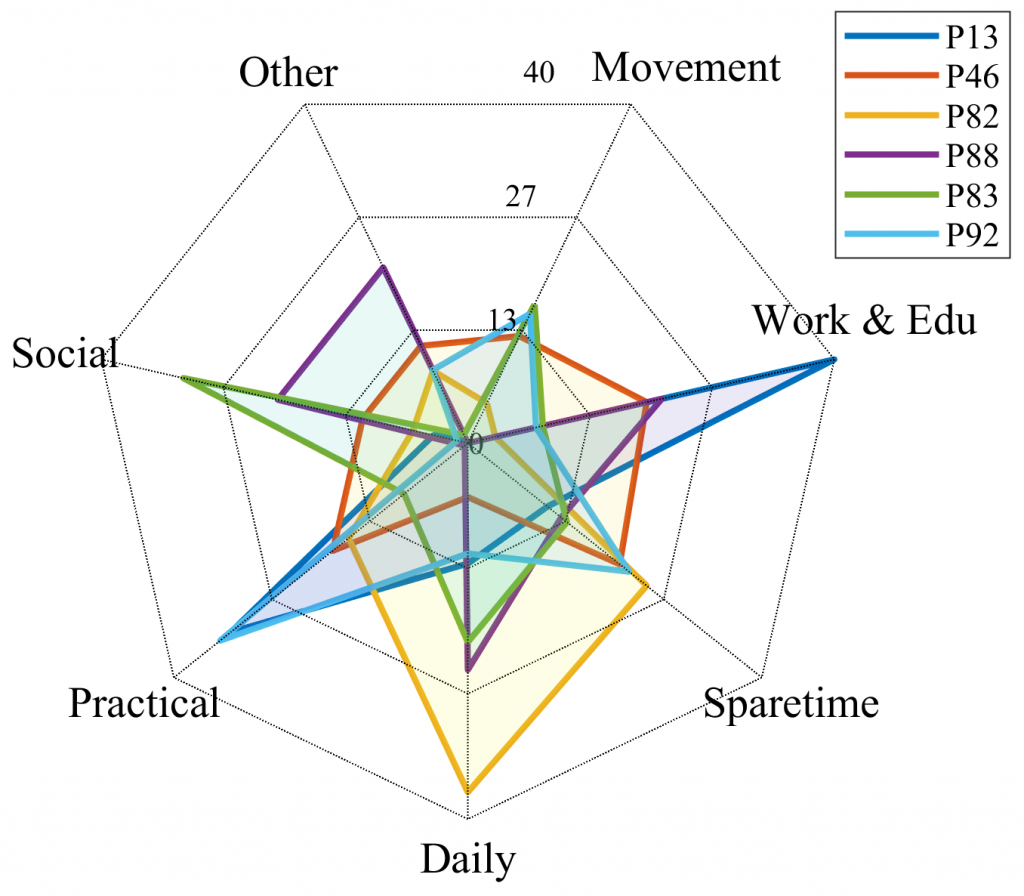
One of the main findings of our study of MORIBUS is the high degree of individual differences in how patients do BA. The textbook version of BA assumes (or instructs) that patients do activity planning and registration in one way and provides only one schema to do so. However, our study – despite its limited number of participants – showed that activity patterns and their effect on pleasure and mastery are highly individual. As shown in Figure 2 there is quite a difference in what type (i.e., category) of activities patients were doing. And as shown in Figure 3 we found individual differences as to when patients reflected on activities and where they did the planning and registration of activities.
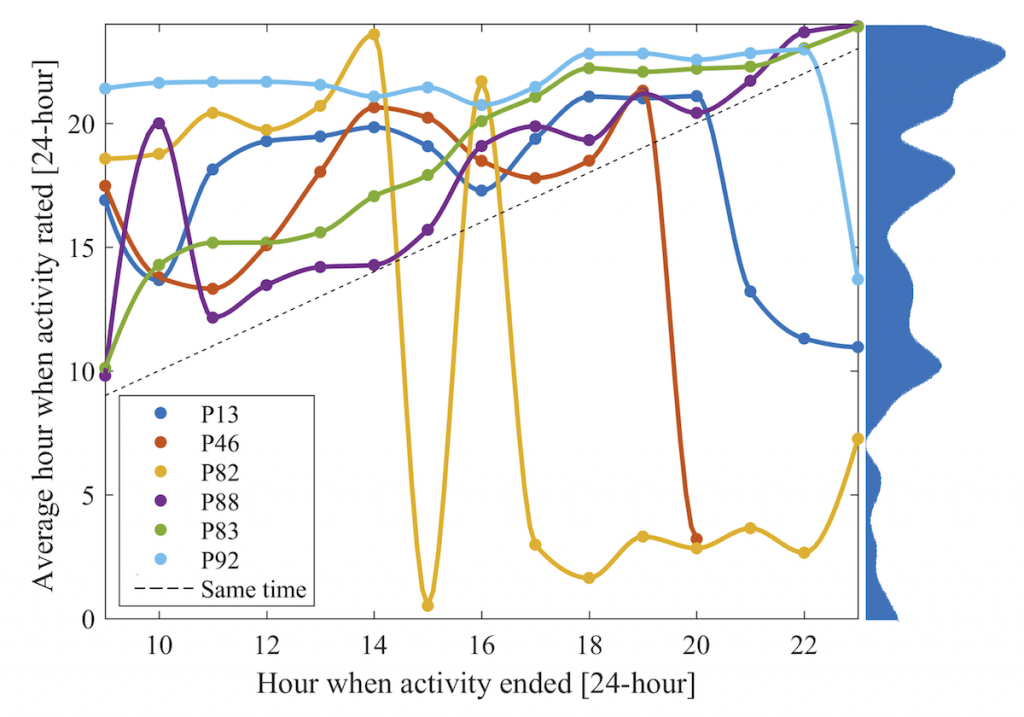
The core design implication from this study is, therefore, that it is crucial to the design of activity-tracking technology like MORIBUS to enable highly individual and personalized activity planning and registration.
Machine Learning for Recommending Healthy Behavior
Based on the insight – and data – from the MORIBUS study, we asked ourselves:
Is it possible to automatically identify and thereby recommend activities that are healthy for a person?
To answer this, we did an offline analysis of the data collected from the MORIBUS study [6]. The short answer is “yes” – this is possible.
We used a probabilistic multinomial Naive Bayes (NB) classifier and a Support Vector Machine (SVM) to model the activities as a bag-of-words to predict mood outcomes. We separated the analysis into a generalized model where we pooled all participants, comparing it with a personalized model. As shown in Figure 4a, the NB and SVM models seem to converge and stabilize after a training size of 40%. This is verified by inspecting the test and training error (Figure 4b). Here we see low bias and variance and convergence after a training size of 100 activities (40% holdout). Hence, both NB and SVM favored the personalized model when used on a pool of 40% (45.65, SD = 16.03) of the activities.
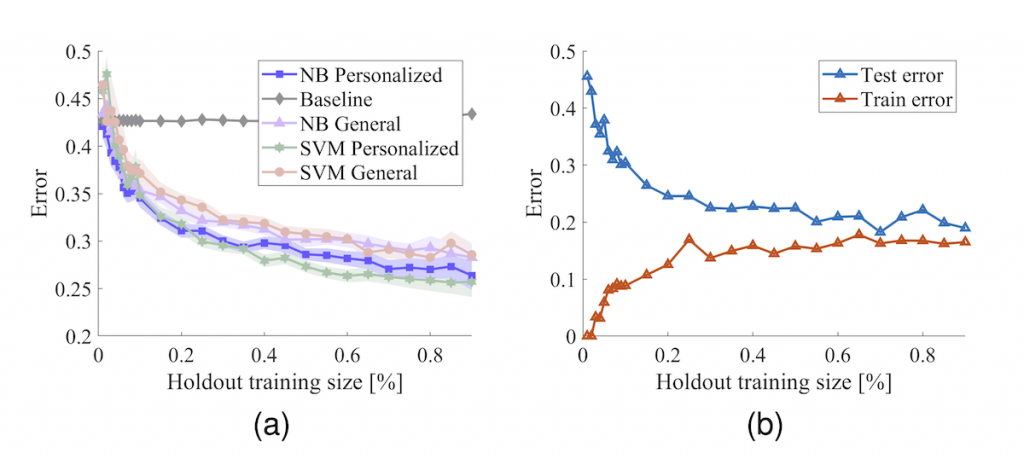
Our main results show that the model is able to incrementally learn from past activity data to more accurately predict whether a given activity would be rated as positive by the user. The model quickly converges to high accuracy and was able to classify activities as positive, while filtering out activities resulting in negative consequences. We have therefore proposed a recommender system with the potential to improve mental health and well-being.
This recommender algorithm and approach subsequently became the “engine” of the MUBS activity recommender system.
MUBS
MUBS [4] was designed following a user-centered design process involving an interdisciplinary set of clinical (psychiatrists, psychologists, and nurses) and technical (computer scientists, UX designers, and biomedical engineers) professionals who worked closely with four patients diagnosed with a depressive or bipolar disorder. The design activities included interviews with patients and clinicians, two design workshops, iterative prototyping, and a lab-based evaluation of the UX design.
As a result of this design process, MUBS is designed according to support the following design principles:
- MUBS should support activity tracking and registration since this is core to the BA methodology. The textbook version of BA, however, recommends detailed hourly activity registration with ‘mastery’ and ‘pleasure’ scores, but the design process – and the evaluation of MORIBUS – revealed that this was too cumbersome and demanding, and would not succeed in real-world usage. Instead, a novel approach was co-designed in which activity registration was reduced to only morning, afternoon, and evening, ‘pleasure’ was replaced by a simple ‘thumbs-up/down’ approach, and ‘mastery’ was predefined for each activity as a difficulty level between 1-3. In this way, activity registration was considerably simplified while still complying with the core BA methodology.
- MUBS should support activity planning – another core component of BA. Again, during the design process, it became apparent that activity planning should be straightforward. Hence, the initial design from MORIBUS using a calendar with detailed information on e.g., the timing was replaced with a more simple approach where activities can be added ‘somewhere during the day’.
- MUBS should inspire the patient to identify, plan, and perform healthy activities, which is a BA component normally supported by a therapist. The approach is to have MUBS assist in recommending activities, thereby inspiring healthy behavior. Two features were designed to accommodate this; (i) a catalog of inspirational activities, and (ii) the recommender algorithm presented above, which can be trained to learn the patient’s activity preferences and then propose personalized activities.
- In contrast to MORIBUS, MUBS should work independently of the clinic and the therapist, and be designed as a self-management tool for engaging the patient in BA. The system should inspire the patient to plan and track activities in between therapy sessions or even when no longer in therapy. Hence, even though MUBS can be used as part of clinical treatment, the main focus is to support self-efficacy.
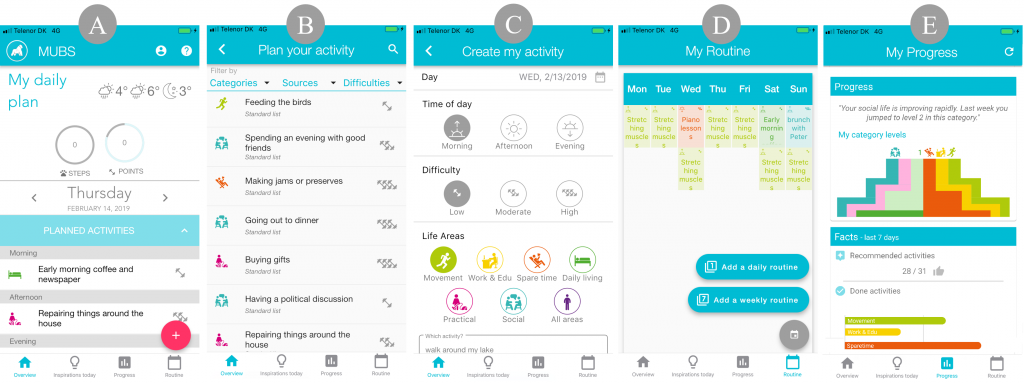
scheduled. From [4].
The main user interface (UI) of MUBS is shown in Figure 5 and consists of five pages (A–E):
- The homepage (A) shows a daily weather forecast, step count, achieved ‘difficulty level points’, and a list of planned and completed activities. Planned activities are separated into three time slots; morning, afternoon, and evening. Daily mood ratings are automatically scheduled as an evening activity (not shown). When a planned activity is selected, it can be marked as ‘done’ and given a ‘thumbs-up/down’ rating (not shown). A new activity can be created via the red plus button, which gives two options; (i) a list containing the catalog of 384 enjoyable activities and previously completed activities (screen B), or (ii) fetch a list of 10 personalized recommended activities to chose from (not shown).
- Screen B shows the activity catalog. Each activity is labeled with a difficulty level (1–3 dumbbells) and is organized into activity categories. Each category has a unique icon and color used throughout the app. The list can be filtered by activity attributes (category, source, difficulty).
- Activities can be searched using the search icon. If the activity searched for does not exist, the user can create a new activity, as shown in screen C. Custom-made activities are saved in the catalog and available for later planning.
- The routine page (D) shows a schedule of reoccurring activities and provides a button for creating routine activities daily or weekly.
- The progress page (E) visualizes patient progress in two ways; (i) the pyramid illustrates progress according to the three difficulty levels divided into the activity categories – each step indicates the achievement of one difficulty level, and (ii) the bar chart showing the number of activities the patient has completed within each activity category.
MUBS is available for both iOS and Android. It is implemented in Flutter and uses the CARP Mobile Sensing Framework [7] for the collection of the context data, including steps and weather information, and Google Firebase as a secure backend server.
If you are interested in trying out MUBS, a good introduction on how to use the app is available in this Medium post and the app is available both on Google Play and Apple App Store.
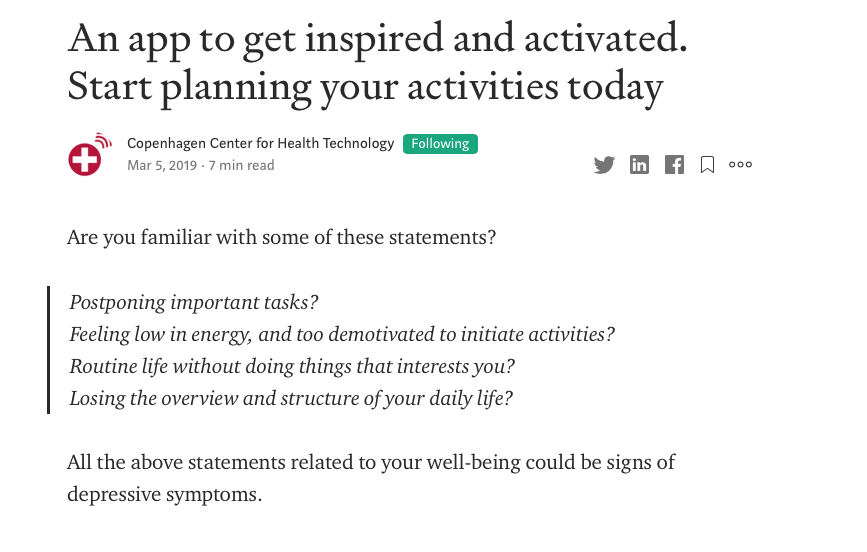
Feasibility Study
MUBS was also subject to a single-arm clinical feasibility study [5]. We recruited 21 patients and N=17 patients completed the 8-week study, which resulted in 2,895 planned activities in MUBS. Overall, patients used MUBS 76% (SD= 15%) of the days during the 8-week study. The patients showed consistent adherence to reporting and the creation of activities in MUBS [4].
Based on qualitative questionnaires and interviews, patients found MUBS easy to use and very useful for managing depressive symptoms. For example, 75% of patients agreed to the statement that “using MUBS would help me reach my health goals of reducing depressive symptoms”.
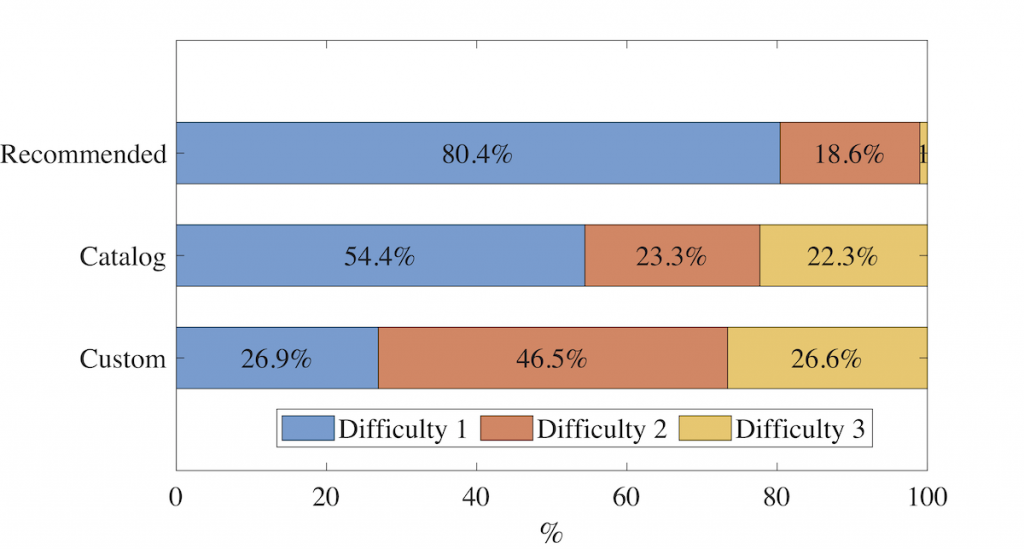
When analyzing how patients found inspiration for new activities, most activities (60%) were picked from the activity catalog, and the recommendations were used less. Figure 6 shows the distribution of activities divided by difficulty level depending on how an activity was created; recommended by the app, chosen from the catalog, or custom-made. The figure illustrates that patients used the recommender algorithm for less challenging activities that could easily be incorporated into the current context. As an example, a patient scheduled ‘turning off electronic devices for an hour’ on a Monday afternoon.
Overall, the patients reported that they learned to appreciate the smaller everyday activities. They became aware of positive daily inputs that were otherwise overlooked during depressive days. They managed to plan more enjoyable activities and felt rewarded when they followed their plan. As such, MUBS seems like a feasible approach for supporting BA for patients to handle their depressive symptoms. Further clinical studies are needed to establish clinical evidence for the use of such recommender technology in mental health.
Wrapping Up
As part of the RADMIS project, we have investigated how to build mobile health (mHealth) technology for supporting behavioral activation (BA) for handling depressive symptoms. Our research had three main iterations, starting with a “hard-core” BA app MORIBUS which followed the principles of BA closely, over an analysis of the collected data for predicting which activities are most beneficial to patients, to the design of MUBS as a more “flexible” mHealth app for stand-alone support for BA, which utilize machine learning to recommend healthy activities.
Single-arm – i.e., not including a control arm – studies showed promising results in terms of using mHealth technology for BA and for managing depressive symptoms – and the approach seems feasible. However, further clinical studies are needed to establish clinical evidence for any clinical efficacy in terms of e.g. reducing depressive symptoms. Such studies are currently in the planning and we hope to be able to provide more details on this later.
References
![[pdf]](https://www.bardram.net/wp-content/plugins/papercite/img/pdf.png)
[Bibtex]
@article{ieee-pvc-bardram2020,
author = {Bardram, Jakob E and Matic, Alexandar},
doi = {10.1109/MPRV.2019.2925338},
issn = {1558-2590},
journal = {IEEE Pervasive Computing},
pages = {1--11},
title = {{A Decade of Ubiquitous Computing Research in Mental Health}},
year = {2020}
}![[pdf]](https://www.bardram.net/wp-content/plugins/papercite/img/pdf.png)
[Bibtex]
@inproceedings{rohani2017moribus,
address = {New York, NY, USA},
author = {Rohani, Darius A and Tuxen, Nanna and Kessing, Lars V and Bardram, Jakob E},
booktitle = {Proceedings of the 11th EAI International Conference on Pervasive Computing Technologies for Healthcare},
doi = {10.1145/3154862.3154919},
file = {:Users/bardram/Documents/Mendeley Desktop/p431-rohani.pdf:pdf},
isbn = {978-1-4503-6363-1},
keywords = {activity sampling,behavioral activation,depression,mental health},
pages = {431--435},
publisher = {ACM},
series = {PervasiveHealth '17},
title = {{Designing for Hourly Activity Sampling in Behavioral Activation}},
url = {http://doi.acm.org/10.1145/3154862.3154919},
year = {2017}
}![[pdf]](https://www.bardram.net/wp-content/plugins/papercite/img/pdf.png) D. A. Rohani, N. Tuxen, A. Q. Lopategui, M. Faurholt-Jepsen, L. V. Kessing, and J. E. Bardram, “Personalizing mental health: A feasibility study of a mobile behavioral activation tool for depressed patients,” in Proceedings of the 13th EAI International Conference on Pervasive Computing Technologies for Healthcare, 2019, p. 282–291.
D. A. Rohani, N. Tuxen, A. Q. Lopategui, M. Faurholt-Jepsen, L. V. Kessing, and J. E. Bardram, “Personalizing mental health: A feasibility study of a mobile behavioral activation tool for depressed patients,” in Proceedings of the 13th EAI International Conference on Pervasive Computing Technologies for Healthcare, 2019, p. 282–291. [Bibtex]
@inproceedings{rohani2019personalizing,
title={Personalizing mental health: A feasibility study of a mobile behavioral activation tool for depressed patients},
author={Rohani, Darius A and Tuxen, Nanna and Lopategui, Andrea Quemada and Faurholt-Jepsen, Maria and Kessing, Lars V and Bardram, Jakob E},
booktitle={Proceedings of the 13th EAI International Conference on Pervasive Computing Technologies for Healthcare},
pages={282--291},
year={2019}
}![[pdf]](https://www.bardram.net/wp-content/plugins/papercite/img/pdf.png) D. A. Rohani, A. Q. Lopategui, N. Tuxen, M. Faurholt-Jepsen, L. V. Kessing, and J. E. Bardram, “MUBS: A Personalized Recommender System for Behavioral Activation in Mental Health,” in Proceedings of the 2020 CHI Conference on Human Factors in Computing Systems, 2020, p. 1–13.
D. A. Rohani, A. Q. Lopategui, N. Tuxen, M. Faurholt-Jepsen, L. V. Kessing, and J. E. Bardram, “MUBS: A Personalized Recommender System for Behavioral Activation in Mental Health,” in Proceedings of the 2020 CHI Conference on Human Factors in Computing Systems, 2020, p. 1–13. [Bibtex]
@inproceedings{rohani2020mubs,
author = {Rohani, Darius A and Lopategui, Andrea Quemada and Tuxen, Nanna and Faurholt-Jepsen, Maria and Kessing, Lars V and Bardram, Jakob E},
booktitle = {Proceedings of the 2020 CHI Conference on Human Factors in Computing Systems},
file = {:Users/bardram/Documents/Mendeley Desktop/3313831.3376879.pdf:pdf},
pages = {1--13},
title = {{MUBS: A Personalized Recommender System for Behavioral Activation in Mental Health}},
year = {2020}
}![[pdf]](https://www.bardram.net/wp-content/plugins/papercite/img/pdf.png) J. E. Bardram, “Evaluating Personalized Pervasive Health Technology – But How?,” IEEE Pervasive Computing, vol. 19, iss. 3, pp. 37-44, 2020.
J. E. Bardram, “Evaluating Personalized Pervasive Health Technology – But How?,” IEEE Pervasive Computing, vol. 19, iss. 3, pp. 37-44, 2020. [Bibtex]
@article{bardram2020evaluating,
author={Jakob Eyvind Bardram},
journal={IEEE Pervasive Computing},
title={Evaluating Personalized Pervasive Health Technology - But How?},
year={2020},
volume={19},
number={3},
pages={37-44},
}[Bibtex]
@article{rohani2020recommending,
author = {Rohani, Darius Adam and Springer, Aaron and Hollis, Victoria and Bardram, Jakob E and Whittaker, Steve},
journal = {IEEE Transactions on Emerging Topics in Computing},
publisher = {IEEE},
title = {{Recommending Activities for Mental Health and Well-being: Insights from Two User Studies}},
year = {2020}
}![[pdf]](https://www.bardram.net/wp-content/plugins/papercite/img/pdf.png) J. E. Bardram, “The CARP Mobile Sensing Framework–A Cross-platform, Reactive, Programming Framework and Runtime Environment for Digital Phenotyping,” arXiv preprint arXiv:2006.11904, 2020.
J. E. Bardram, “The CARP Mobile Sensing Framework–A Cross-platform, Reactive, Programming Framework and Runtime Environment for Digital Phenotyping,” arXiv preprint arXiv:2006.11904, 2020. [Bibtex]
@article{bardram2020carp,
title={The CARP Mobile Sensing Framework--A Cross-platform, Reactive, Programming Framework and Runtime Environment for Digital Phenotyping},
author={Bardram, Jakob E},
journal={arXiv preprint arXiv:2006.11904},
arxivId = {cs.HC/2006.11904},
year={2020}
}
